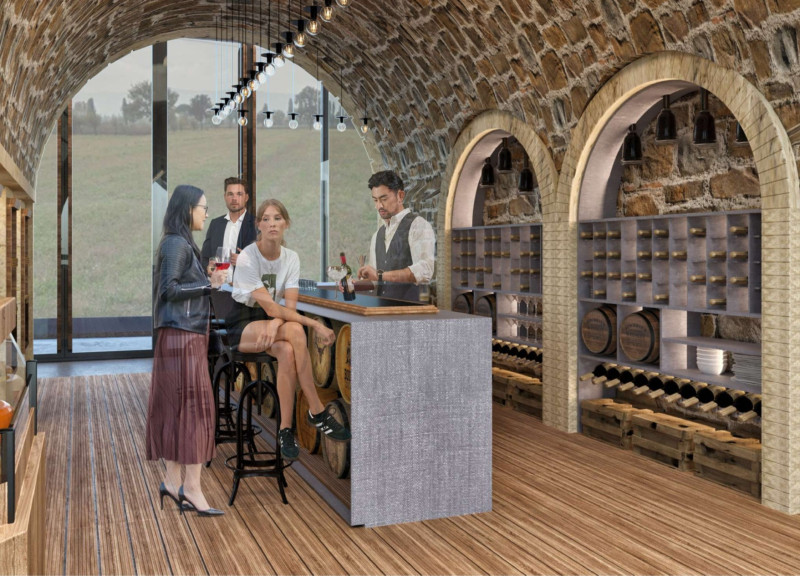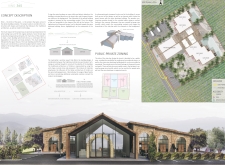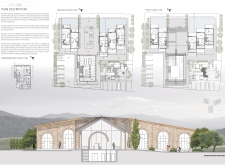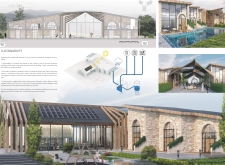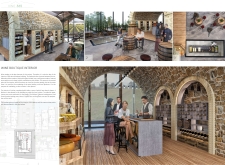5 key facts about this project
This project represents a unique endeavor to create a space where visitors can immerse themselves in the local wine experience while also enjoying the tranquil beauty of the vineyard. The design boasts a clear intention: to celebrate winemaking as a sensory journey. The layout promotes accessibility and encourages interaction among guests, fostering a sense of community and connection with the land.
Integral to the functionality of Vino 365 is its meticulous zoning of spaces. The architect has effectively arranged the ground floor primarily for public engagement, featuring a wine boutique with tasting rooms and product displays. This accessibility is complemented by strategically designed communal areas that invite social interaction, allowing guests to appreciate local wines in a comfortable setting. The upper floor is dedicated to private guest accommodations, designed to provide solitude and stunning views of the vineyards, ensuring a unique retreat experience.
The architectural design exhibits an innovative approach to materiality. The use of natural stone for the façade reflects the rustic charm of local architecture and establishes a tactile connection with the site. Pine wood elements contribute warmth, while expansive glass facades create a seamless transition between indoor and outdoor spaces, allowing natural light to define the interior ambience. Steel supports enhance the structural integrity of the building while reinforcing a modern aesthetic.
In addition to its focus on materials, Vino 365 incorporates various sustainability features, which are essential for contemporary architecture. The installation of photovoltaic panels captures renewable energy, further emphasizing the project’s commitment to minimizing its environmental impact. A rainwater management system supports irrigation needs, while the integration of heat pumps optimizes energy usage for temperature control. Techniques such as cross ventilation leverage natural airflow, contributing to occupant comfort throughout the seasons.
The interior spaces of Vino 365 are thoughtfully designed to enhance the overall visitor experience. The arch-structured areas, which serve various functions, lend an acoustic quality that enriches wine tastings and gatherings. Careful selections of finishes, including wooden paneling and stone accents, create an inviting atmosphere that encourages relaxation and connection.
A significant aspect of Vino 365 is its commitment to community engagement and education regarding sustainable practices. By showcasing local wines and offering spaces for communal activities, the project serves as a model of how architecture can harmoniously blend functionality with cultural appreciation. The relationships between the building and its natural surroundings, as well as between the public and private domains, encapsulate the core philosophy of this design initiative.
To gain a deeper understanding of the architectural plans, sections, and innovative design strategies employed in Vino 365, readers are encouraged to explore the full project presentation. This exploration will provide valuable insights into the architectural ideas that define Vino 365 as a noteworthy addition to contemporary architecture within a vineyard setting.


